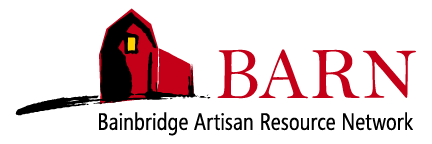
Fiber Arts, Print & Book Arts
Block Printing Repeat Patterns for Textiles
Learn the basics of designing and block printing your own repeat pattern designs on textiles.
Tuition Assistance and Other Policies
Meeting Times
- Sat, 9/21/2024 10:00 AM - 4:00 PM
- Sun, 9/22/2024 10:00 AM - 4:00 PM
Sat, 9/21/2024 - Sun, 9/22/2024
Closed
About
Learn the endlessly creative exploration of surface design on textiles! The art of block printing and creating repeat patterns on textiles is the slowest process of printing. Once mastered, it's quite rewarding and shows the artisan's touch. These techniques date back to ancient civilizations but still stand the test of time in their popularity.
You'll begin by designing a simple motif within the confines of a small square that then will be carved. That will be followed by a discussion of mixing pigments and the various ways of designing, registering, and repeating motifs when printing on fabric. Then the fun part: testing and printing your design to create various repeat patterns. Demonstrations will guide you all the way through heat-setting.Easy-to-understand techniques and skill building will be provided using blocks that are easier to carve than traditional substrates. This class creates the foundation for other block printing classes taught by the same instructor (you may be interested in looking at "Beyond the Square" when next offered). Sewing won't be part of the instruction, but suggestions may be offered.
Details
- Skill level: Beginning
- The printing process requires standing and leaning over a table so, in addition to hand strength, a strong back and comfortable shoes are strongly suggested.
- Bring a sack lunch both days. There is a refrigerator and microwave on the lower level.
Project
You'll take home your own hand-printed bandana with your unique design as well as the skills to continue exploring the process on your own.
Materials
- A $30 materials fee, included in the cost of the class, pays for a kit containing pigments for printing, blocks for carving, a table pad, foam for inking, basic tools, and textiles. Studio tools and supplies will be available for you to use.
- Students need to bring:
- Two or three clear deli containers with tight-fitting lids (for mixing pigments).
- Apron and/or work clothes (pigments will stain clothes).
- Rubber gloves.
- Sketchbook and pencil with eraser.
- Sharpie pens.
- Tracing paper (optional).
Class Policies
- Ages 14 and up are welcome.
- Wear comfortable, closed-toe shoes.
BARN Policies
- View BARN's Cancellation and Refund Policy.
- Tuition Assistance is available. Fill out the application before registering.
- BARN is committed to accessibility. We try to make accommodations when requested; the earlier you contact us, the more likely we can help. Please email accessibility@bainbridgebarn.org to find out more or request an accommodation.
- Sensory Statement: Makerspaces like BARN can be noisy and cluttered, smell strongly, and have bright or flickering lights. BARN is not an allergen-free facility. If you have concerns, please email info@bainbridgebarn.org.
Instructors or Guides
Christa Schoenbrodt


Follow Us